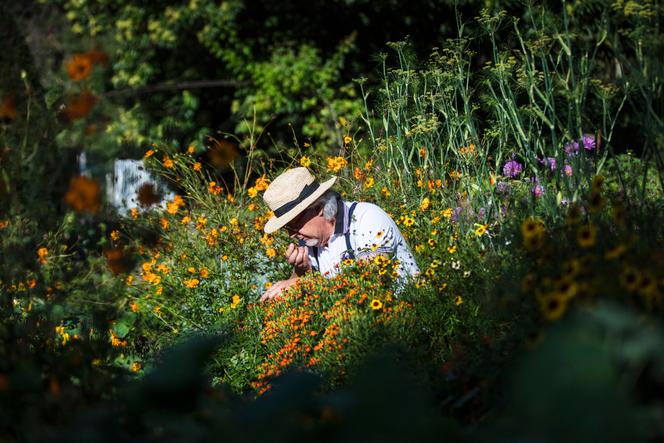


Near the perfectly round pond at the heart of the Kobelsberg gardens in Riquewihr, eastern France, one can spend several minutes admiring the silent dance of the koi carp. The red and white fish send ripples across the emerald surface, creating a shimmering, ever-shifting mosaic. When you finally look away from this scene, clusters of sculptures catch your eye along the water's edge: bronze spheres, elegant deer, a half-buried bust, a metallic ostrich.
Farther on, a fine replica of Edgar Degas's Little Dancer, Aged 14 stretches next to small houses, cobbled together from old Alsatian materials salvaged from farms. They have a charmingly crooked look, topped with century-old, multicolored flat tiles – white, orange, almost black. Completing this enchanting tableau are the cheerful chirping of birds in the birch trees, the clucking of a few hens and the complex scents rising from scattered flowers – tulips, rare roses – and from the earth warmed by the first rays of the morning sun.
The Kobelsberg gardens, perched above one of the best-preserved medieval villages in the Alsace region, are anything but an ordinary vegetable plot. Discovering them alongside chef Jean-Luc Brendel, who created them, one might even wonder if they were designed more for the eyes than the palate. "Here, nothing is merely decorative," the chef-gardener − who designed almost everything himself, including the cottages − quickly clarified. "20 years ago, I still planted a few things just for their appearance. But today, it's all for taste. Almost everything is edible – I don't garden for Instagram."
You have 76.32% of this article left to read. The rest is for subscribers only.
